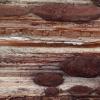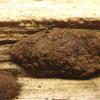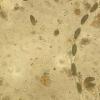
18-12-2017 10:41
Hello.I would like a name on this.Spores 15x6 my.A

18-12-2017 12:24
Pauline. PennaBonjour tousThese tiny Xylaria were found on a fal

17-12-2017 10:54
Hello.This was found on sticks of Fagus.Spores 11-

17-12-2017 12:55
 Blasco Rafael
Blasco Rafael
Hola, les parece que sea la que propongo ????Recog

16-12-2017 14:18
I would like a name on this. 2 mm in diameter, dar

15-12-2017 15:20
 Bernard CLESSE
Bernard CLESSE
Dans le même xérobrometum (pelouse calcicole xé

14-12-2017 11:51
3-8 mm in diameter, black, sp. 14-15 x 7-8 my, asc
I would like a name on this.
Spores 15x6 my.
Asci 150x7
Greetings, Per
it looks like a Hypoxylon, e.g. H. fuscum, which is very common on Corylus. If you can, please put a piece of the stroma in a drop of KOH and observe the KOH-extractable pigments. For further infos also see here: http://pyrenomycetes.free.fr/hypoxylon/html/Hypoxylon_fuscum.htm
Best wishes,
Gernot

Ascospores of H. fuscum are also distinctive in having a sigmoid, not straight germ slit, please take photos at higher magnification to illustrate this.
Jacques
I know H. fuscum well, but this has another shape.
Thank you both for help.
Per.



